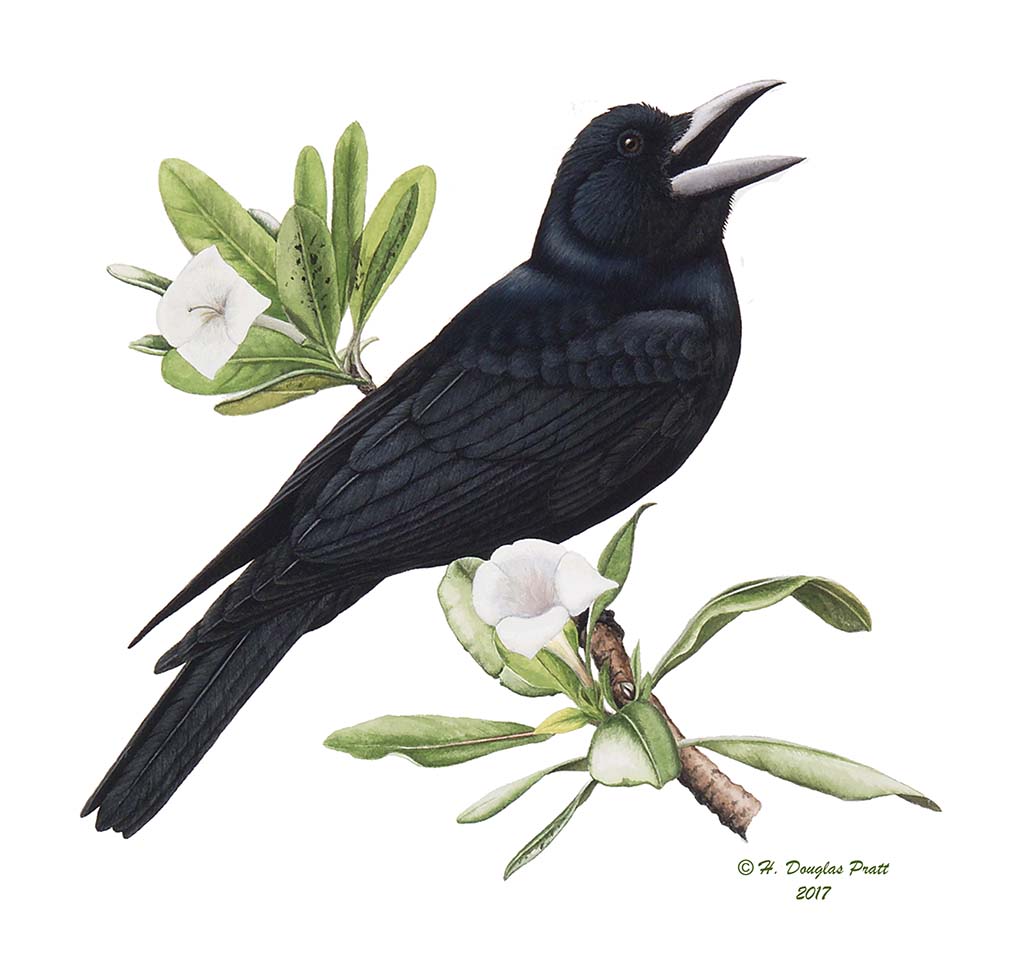Åga: Endangered species

Scientific Name: Corvus kubaryi (Family CORVIDAE)
Common Name: Mariana Crow
CHamoru Name: Åga
Audio sample of the Åga
Habitat and Natural History: It lives in a variety of habitats preferring limestone forest but also strand and ravine forests and agricultural areas. It is omnivorous, feeding on a wide array of food including: fruit, lizards, crabs, small mammals, birds, toads, crabs, worms, leaves, bark, bird eggs flowers and seeds. Family groups defend nesting and breeding territory. Nesting takes place several times a year. Heavy nests made from branches, lined with grass, are constructed high in treetops at the end of strong branches. The nests are about two to two and half feet in diameter. Parents care for the young for up to a year. Åga are important in the dispersing of seeds which helps maintain forest diversity.
Description: A large bird for Micronesia (15 inches or 38 centimeters), it is small for a crow. The Åga is mostly black with a glossy green sheen on the head and bluish black on the back, wing and tail. The eye has a brown iris. Females are slightly smaller than males.
Range: Endemic to Guam and Rota in the Northern Marianas, the Mariana Åga is only found on these two islands.
Current Status: Endangered species, with only two males left on in northern Guam. An unknown number of birds are still present on Rota where the population is declining.
Threats: On Guam the most cause of extirpation was most likely predation by the introduced brown treesnake and habitat destruction.
